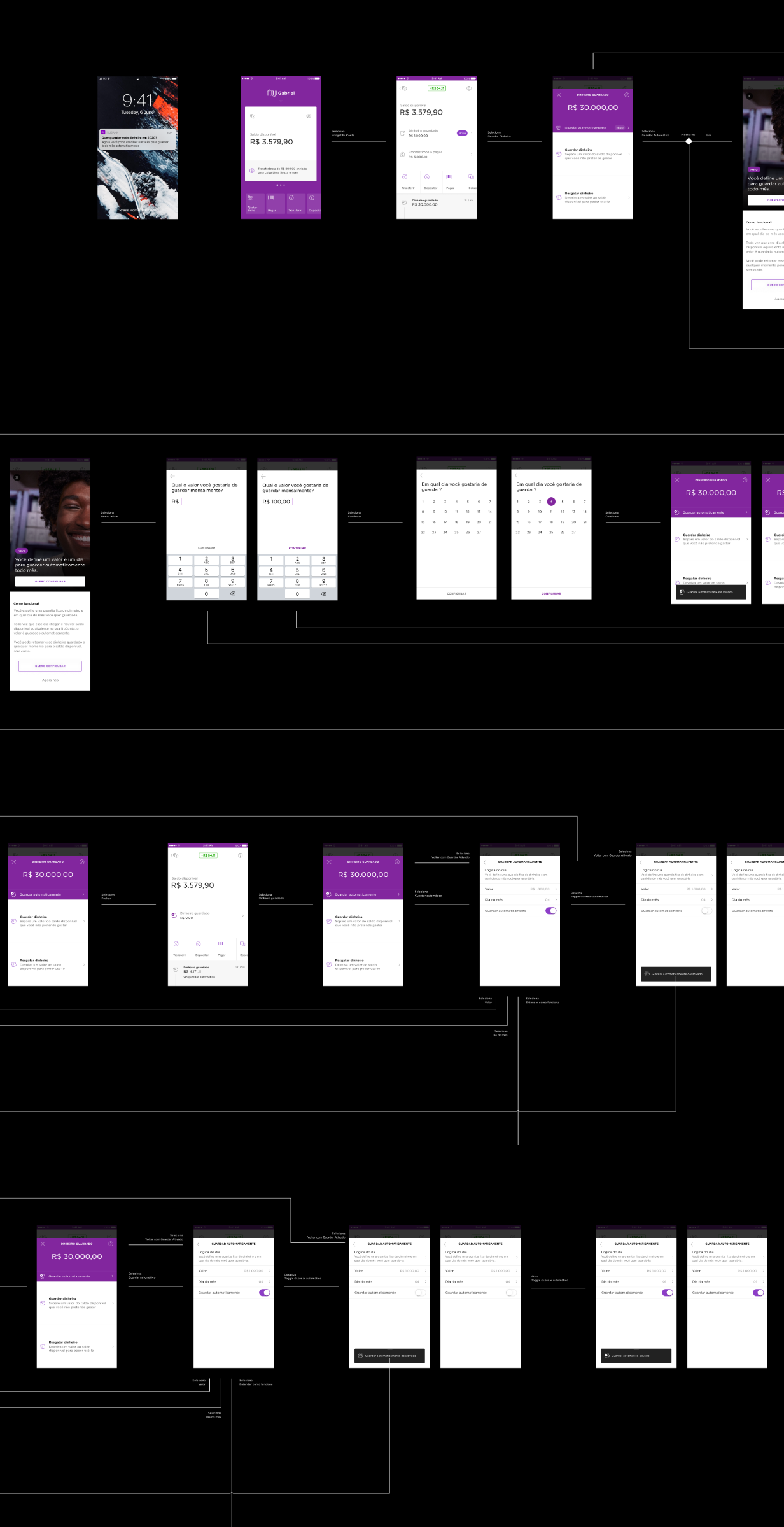Automatic Savings
Inside Nubank, we started to prioritize more initiatives related to financial control. Because of that, it was necessary to create a dedicated team to design and develop solutions for our customers.
As start of the project, we needed to create a strategy that would direct our product vision and also a sense of unity among the peers who were getting to know each other.
We went through fundamental dynamics to build the team's vision, mission and values, created a strategy based on business, technology and user pain, developed our first MVP and reaped results that helped us define the next steps.
In this project, I participated as the only designer, but when necessary, I had help from my amazing team and the perfect research department.
Problems & Goals
Define the pack's vision, mission and values
Create the pack's strategy for the short and medium-term based on business, technology and users
Create a prioritized feature backlog
Design and develop an MVP
Analyze results and define next steps
Results
We chose to develop the features to help the user save money automatically that are being used by 230 thousand users, with a 75% retention, and I have already managed to automate R$70MM. (Approx. numbers, extracted at 06/25/2020)
As a final conclusion, analyzing both quantitative and qualitative data, we can see that the feature is easy to use. Still, it would be interesting to test other rules that we did not prioritize in this release to generate motivation for a broad group of users.
Methodology
1. Financial Control Chattering
With the development of the new pack, our first step was to create dynamics that together we defined who we were. The goal was for us to have a sense of unity, both between people and for the path we wanted to trace and, consequently, to optimize our efforts.
At the end of this phase, we left with a document showing who we were, what we were going to do and especially what was not part of our scope.
2. Understanding Financial Control Journey
After we had a greater understanding of where we wanted to go, the next step was to investigate what should be possible future paths.
Together with the team, we researched, internally and externally, consumer behaviour and created a map of the financial breath to help us define where we should start. We mapped 3 types and 4 macro-categories of products:
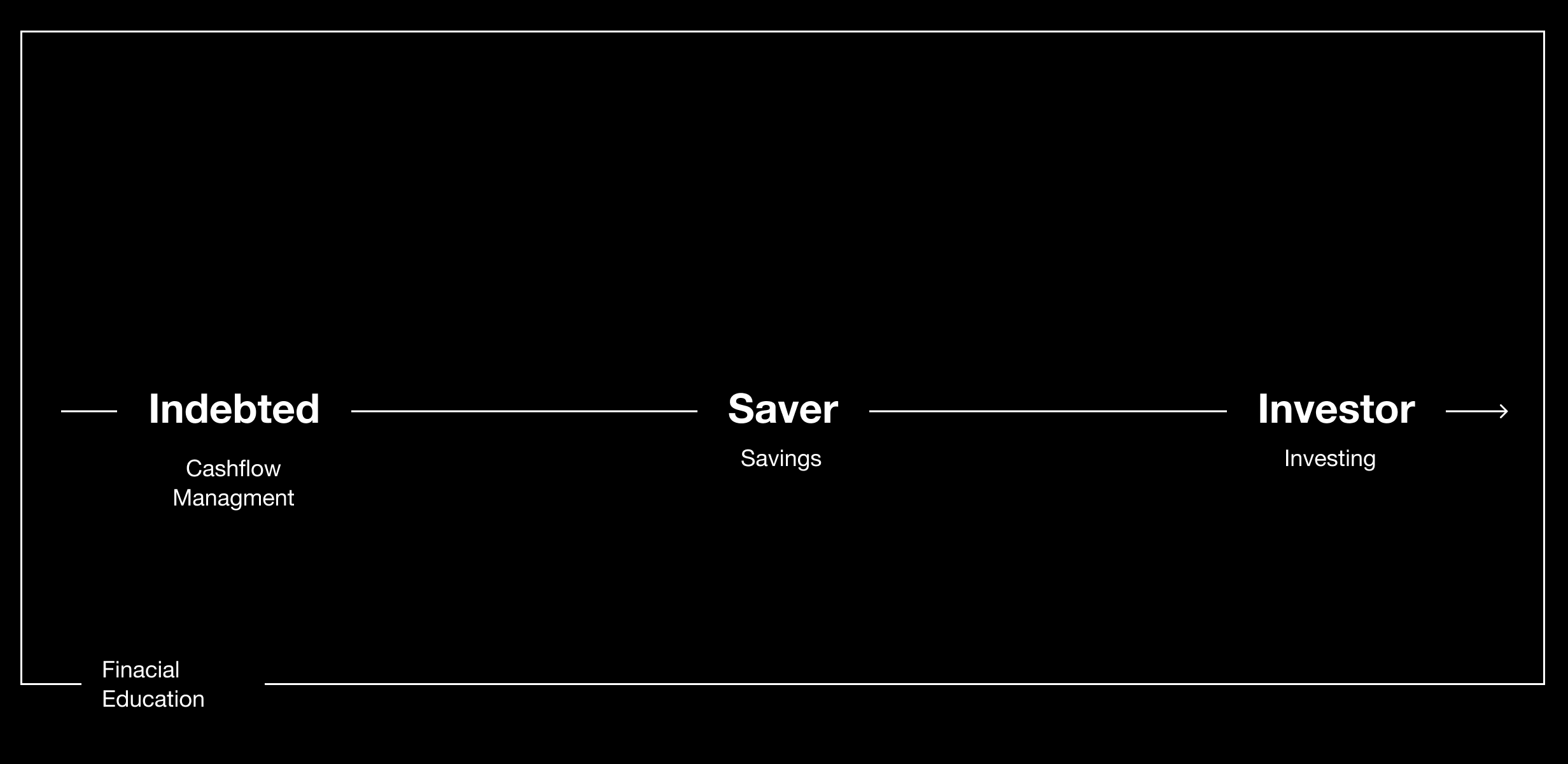
They are not behavioural models because within each chunk there are different behaviours, but they served to take the first step and understand where it would make sense to act based on the business opportunity and on the engineering complexity.
We concluded that the best way for this moment would be to create initiatives that help people to save more and, mainly, better because it would be an evolution of what our account product is already doing.
3. Ideation
With an understanding of business and user pain, we decided to organize a workshop with the whole team, based on the Crazy 8 method, to generate ideas that would help reduce frictions for our users save money.
After the conception of the ideas and compilation, we did an analysis with engineering and business peers to know which ones would have the most significant impact (faster to be developed and higher return for the business)
We came to the conclusion that we wanted to reduce the friction for the user to save continuously. This means that we tried to make the process less painful, mindless if we can, to engage habits, so we chose to develop ways to automate saving money.
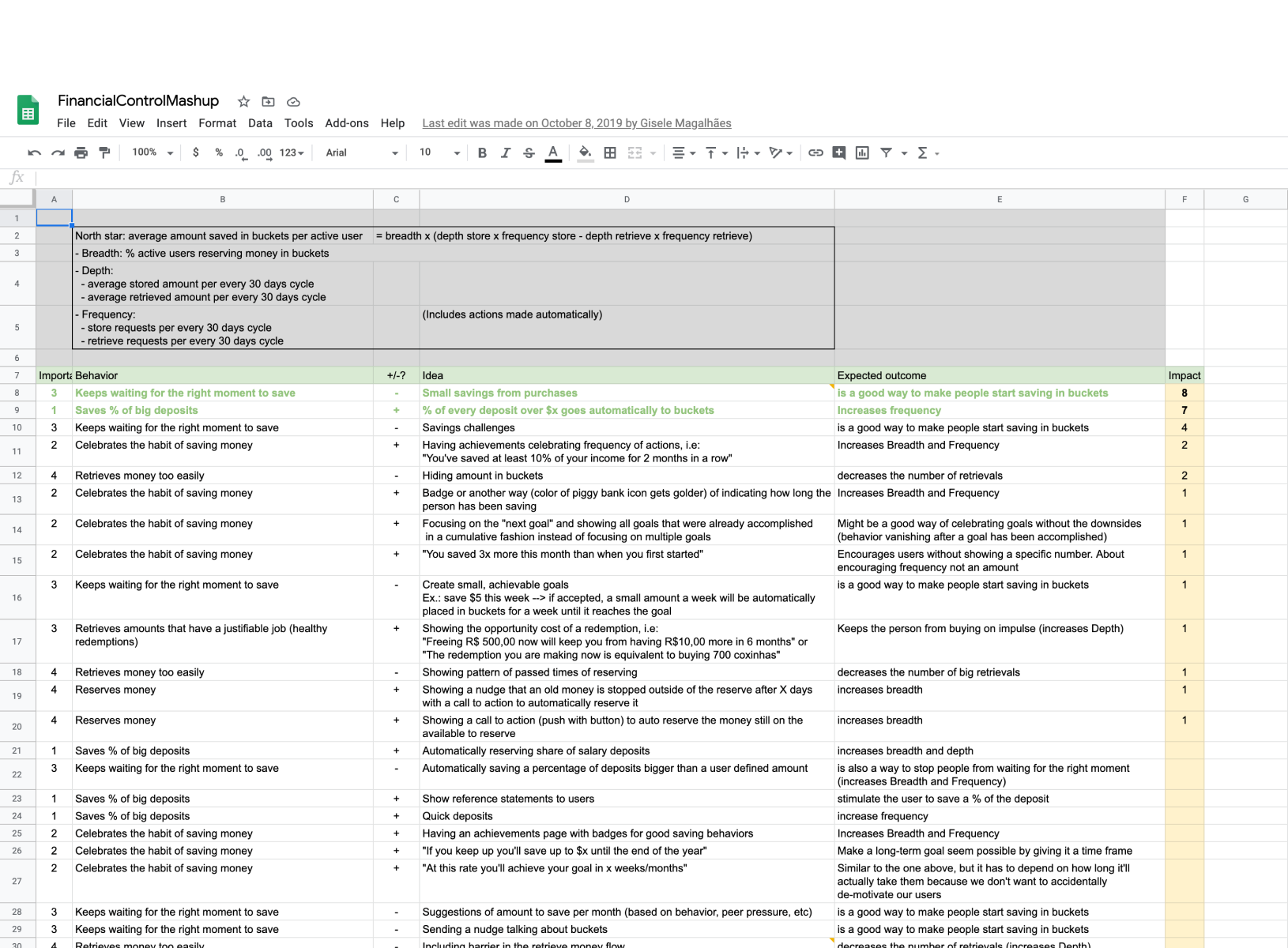
4. Automatic Savings Explorations
The next step was to do another workshop to explore rules that would help users automate saving money. We also use the crazy 8 method.
We managed to come up with 3 rules that we would like to test with our users qualitatively and quantitatively:
"Baldinho", define a limit value to your account and, in each transaction, we validate. If is above we save, if below we fill and then save.
“Poda”, sefine a limit value to your account and, in end of each day, we validate. If is above we save, if below we fill and then save.
“Mordida”, Define a % and each transaction we save.
We also explored the interface and came up with an initial version to also test with customers:
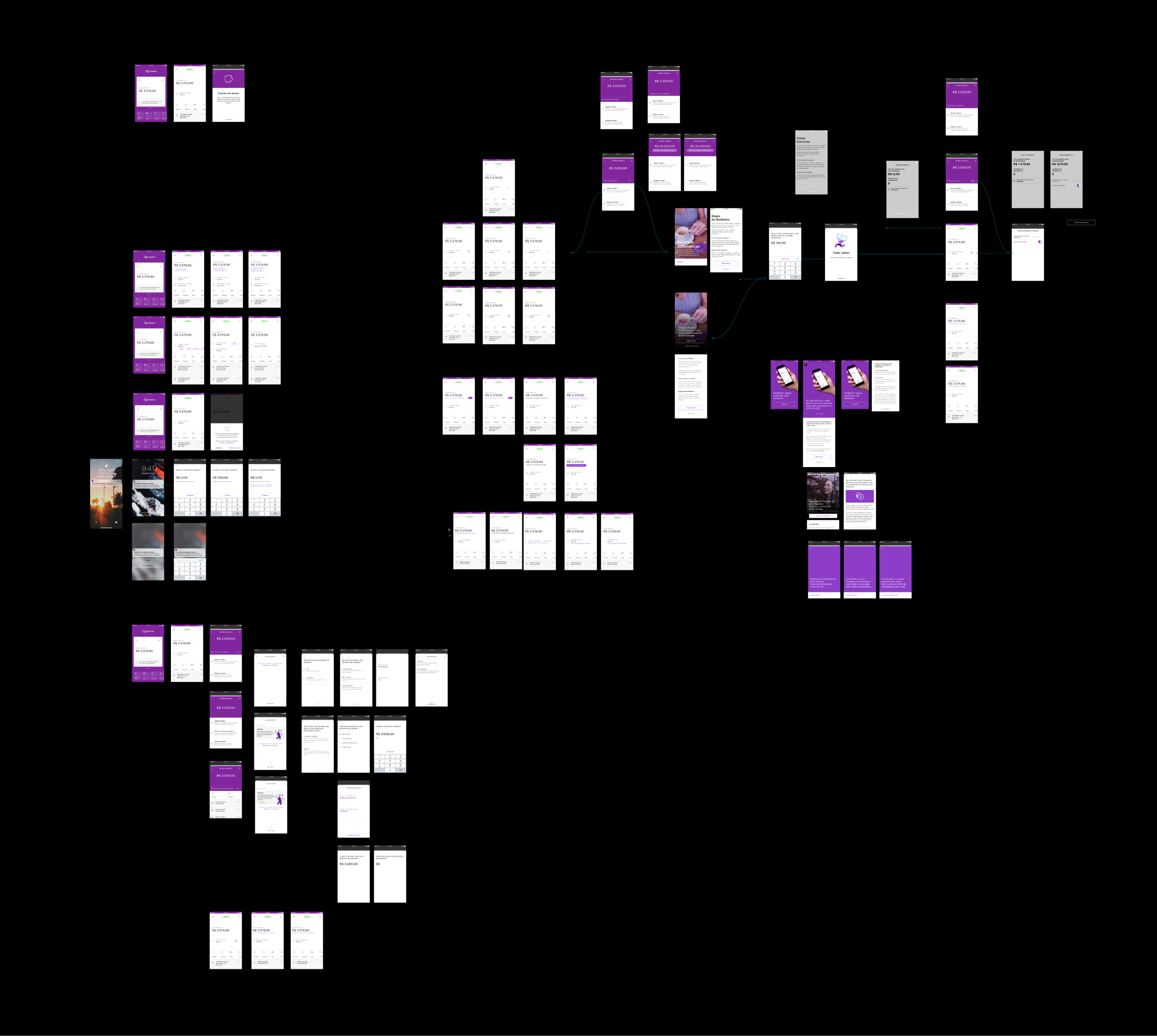
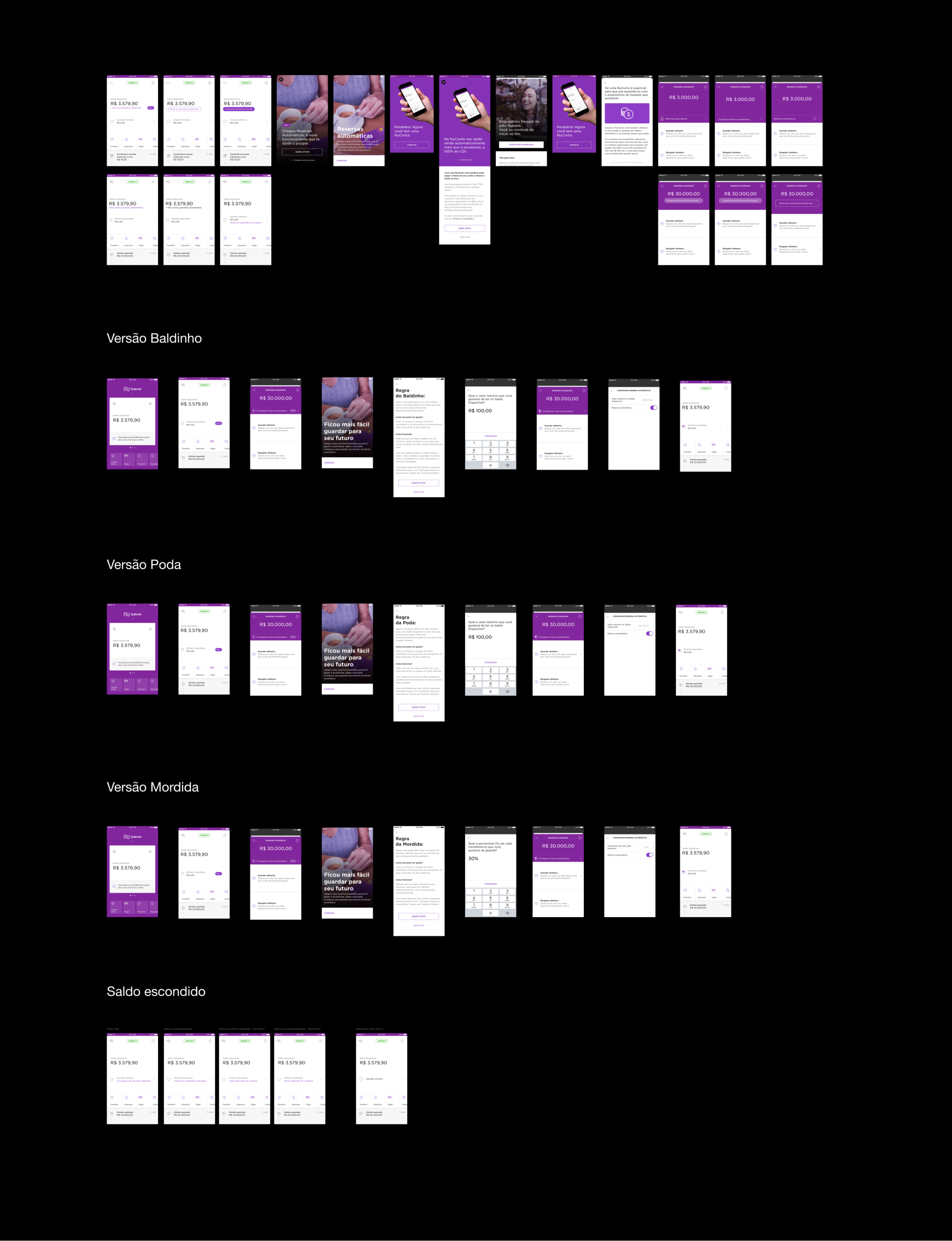
5. Researches
As a first step, we developed qualitative research to see if users understood the logic of our rules and our first interfaces through a usability test.
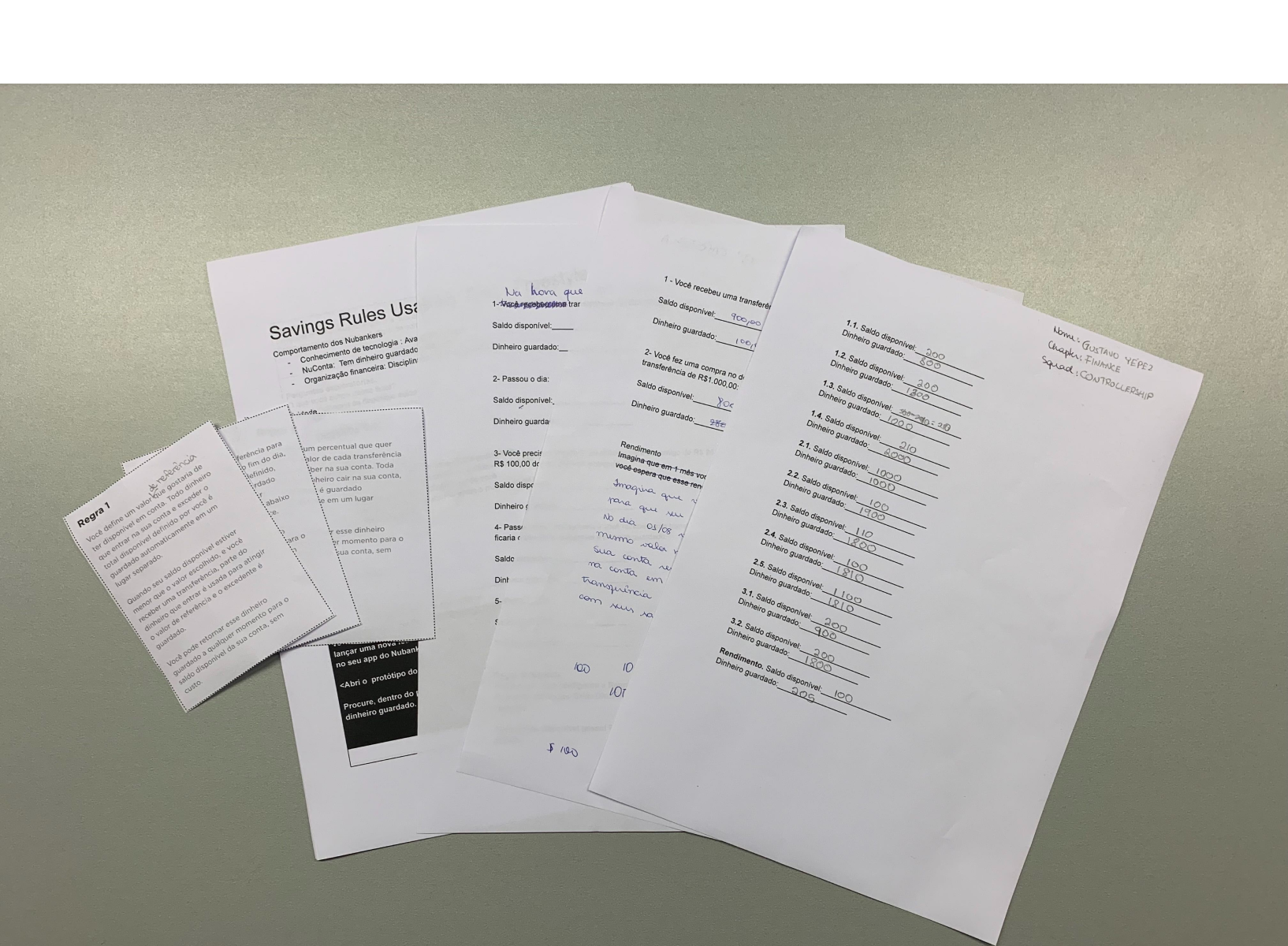
We compiled the result of the quantitative research and prepared quantitative analysis with the addition of two more rules to get a better perception:
“Fixo”, define a value and day to, every month, be saved
“Salário”, define a % of salary to be saved
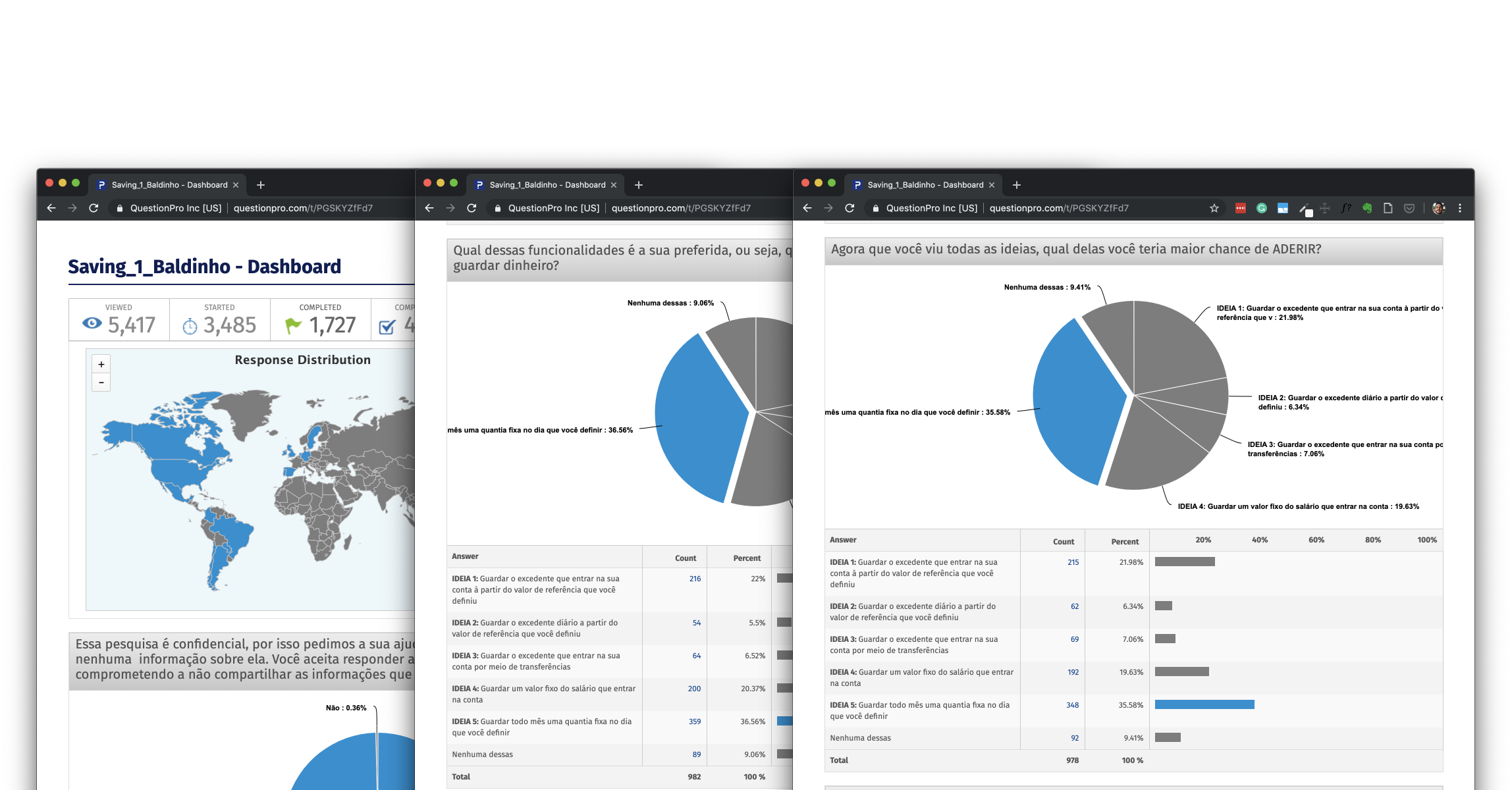
5. MVP, Results and Next Steps
We developed an MVP of the feature to launch to our customers and monitor the result and learn what the next steps would be.
Overall results were positive. We made the decision to maintain the feature and launch it for all customers. We know that we have something to improve, mainly to allow having more rules to save money.
